This article will continue our review of the significant changes in the 2017 NEC that relate to photovoltaic (PV) power systems. In the November-December 2016 issue of the IAEI magazine, the “Perspectives on PV” article covered some of the changes in Article 690 and some of the movement of requirements out of Article 690 into other articles and into new articles. We will start this review with a look at some of the other changes that are in Article 690.
Scope, 690.1
The scope now excludes large PV systems which are now covered in Article 691.
Definitions, 690.2
Several new and revised definitions are included and are, for the most part, self-explanatory and will not be addressed here.
DC-to-DC Converter Source and Output Circuits, 690.7(C)
This new section establishes requirements for determining the maximum voltage of single or multiple series connected dc-to-dc converters.
PV Rapid Shutdown Systems (PVRSS), 690.12
This section received significant changes for 2017. The previous boundary around the PV array that defined the point where conductors must be controlled to a lower voltage has been decreased from 3 m (10 ft) to 305mm (1 ft). The length of allowable uncontrolled conductors inside a building has been reduced from 1.5 m (five ft) to 1 m (3 ft). The time allowance for controlling controlled conductors from initiation has been increased from 10 seconds to 30 seconds. These modified requirements provide additional safety for first responders who must deal with an energized PV array and allow the PV industry, in some cases, easier methods of meeting the requirements. See photo 1.
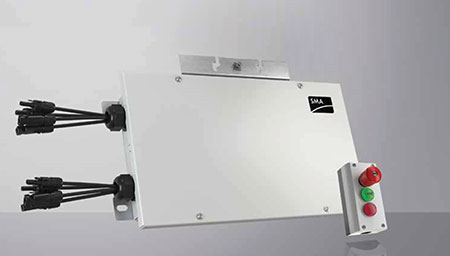
There are now three new options, one of which, that must be used to meet the PVRSS requirements for the conductors inside the PV array controlled boundary.
1) Use a PV array that has been entirely listed or field labeled as a Rapid Shutdown PV array.
2) Install a PV array with controlled conductors inside the array boundary and not more than 1 m (3 ft) from the point of penetration to 80 V or less within 30 seconds of PVRSS initiation.
3) Install a PV array with no exposed conductors or exposed conductive parts that is installed more than 2.5 m (8 ft) from exposed grounded conductive parts or ground.
It should be noted that these three new options will become effective on January 1, 2019. This requirement implies that some sort of module level control will be required to meet the controlled conductors inside the PV array boundary.
In some cases, module level electronics (MLE) such as microinverters, AC PV modules, or DC-to-DC converters may meet this requirement after they have been listed as rapid shutdown equipment. The 2014 NEC required only that the equipment be listed and identified (meaning a listed relay could be used), whereas the 2017 NEC requires the equipment to be listed and labeled as a Rapid Shutdown System or as RS Equipment.
The new and revised PVRSS section of UL Standard 1741(being released in early 2017) establishes complex and detailed testing requirements. One of these requirements is that the ac output of inverters actually go to the controlled voltage limit within the required time frame after initiation (usually opening the ac utility disconnect) of the RSS system. This test was not in UL 1741 under the initial RSS requirements.
The initiation device for the PVRSS must plainly indicate the OFF position and the ON position where the OFF position indicates that the PV array has been put in the controlled state for all circuits controlled by that initiation device. The initiation device shall consist of at least one of the following:
(1) The service disconnecting means.
(2) The PV system disconnecting means.
(3) A readily accessible switch that indicates the ON and OFF position.
Because various PV systems are installed at different times and may be expanded under different editions of the code, Section 690.56(C) requires a plaque clearly showing a physical plan diagram of the PV system indicating which parts of the PV array are RSS controlled and under which edition of the code that part meets. Section 690.56(C)(1) has detailed marking requirements for the various types of PVRSS.
Finally, the manual reset requirement has been deleted from the 2017 NEC.
Inspecting PV RSS
There are going to be several dozen implementations of the PVRSS from as many different manufacturers. Although, presumably, they will all meet the requirements of the code and be listed and labeled for the PVRSS application, they will be implemented in different ways. Inspecting these systems for compliance and to ensure that they are operating as designed and in compliance with the code requirements will require due diligence on the part of the authority having jurisdiction (AHJ). Since each implementation will probably differ in several aspects from other systems, the AHJ will, in all likelihood, have to review the instruction/installation manual for each product at least the first time that particular type of product is inspected. As a minimum, the AHJ should require that the installer demonstrate by a voltage measurement on the controlled conductors that the PVRSS is operating correctly when initiated.
Arc-Fault Circuit Protection (Direct-Current), 690.11
This section of the code was substantially reduced for 2017. An exception was added that exempts PV systems from the arc-fault circuit protection requirement that are not mounted on buildings. Also exempted are PV systems with PV output and dc-to-dc converter output circuits that are direct buried, installed and metallic raceways or installed in closed metallic cable trays. This exclusion was necessary because arc-fault equipment at the high current levels found in large PV arrays does not exist.
The exclusion does not address larger PV systems on the roofs of commercial buildings and these systems may have to be addressed using medium size string inverters with arc-fault detection capabilities mounted in subarrays on the roof.
The manual restart requirement and the requirement for an annunciator have been removed.
Definitions, 705.2
Definitions have been added or modified in this section.
A microgrid system is “a premises wiring system that has generation, energy storage, and/or load(s) that includes the ability to disconnect from and parallel with the primary source.” The requirements of this code apply unless the microgrid system is under the exclusive control of a utility.
The term utility interactive has been modified to just interactive throughout section 705.
The definition of stand-alone system has been moved to a new article entitled Article 710 – Stand Alone Systems.
Point of Connection, 705.12
This article has been simplified so that it deals only with supply-side (A) and load-side (B) connections. Sections dealing with Integrated Electrical Systems and Systems Greater Than 100 kW have been deleted from this article.
Point of Connection, Load Side 705.12(B)
This section has been modified to allow other interconnected (interactive?) power sources to be connected on the load side of the system disconnecting means.
As an aside, I note that my Kohler 12 kW backup generator is marked “Suitable for utility interconnection”, but no details are given on how it is to be operated in that mode.
Center-Fed Panelboards, 705.12(B) (2) (3) (d)
Center-fed panelboards may now be treated like standard panelboards where the backfed PV breaker may be connected at the end (away from the main breaker) on only one of the two busbars and may be rated according to the 120% rule (125% of the inverter output current rating plus the main breaker rating may not exceed 120% of the busbar rating). See photo 2.
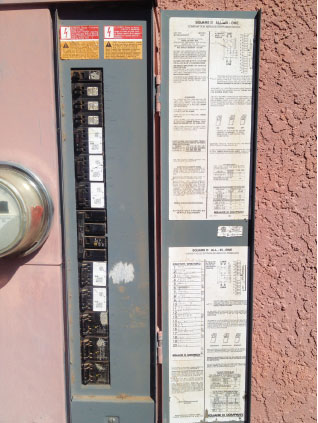
Wire Harness and Exposed Cable Arc-Fault Protection, 2014 – 705.12(D)(6)
This section dealing with ac arc-fault protection for 240-volt ac inverter output circuits up to 30 amps on flexible, exposed cables has been removed because no suitable equipment is available to meet the requirement.
Disconnecting Means, Sources
705.20 may require some harmonization with the revised system disconnect requirements in Article 690 because these Article 705 disconnect requirements require only ungrounded conductors to be disconnected whereas the PV system disconnect requirements in 690.13(F)(1) require all conductors to be disconnected.
The equipment disconnecting requirements in 705.21 are consistent with the equipment disconnecting requirements in 690.15 since both require only the ungrounded conductors to be disconnected.
Disconnect Device, 705.22
This slightly revised section allows power-operated disconnects to be used, but this allowance for PV system disconnects in the 2014 NEC was removed when 690.17 was deleted. Again, harmonization may be required in future editions of the Code.
Microgrid Systems, 705 Part IV
This part has four sections that outline the requirements for operation of a microgrid and connection of that microgrid to a primary power source. These requirements are based primarily on the operation of utility-interactive inverters found elsewhere in Article 705 and previously in Article 690. See photo 3.

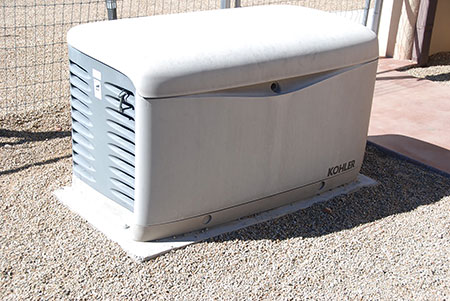
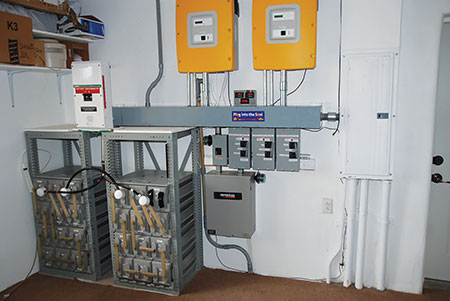
Wiring Systems, 705.175
This section has been moved to Article 710, Stand Alone Systems.
Energy Storage Systems, 706
This new, extensive article will be addressed fully in a future “Perspectives on PV” article, but there is an interesting situation that we find in the 2017 NEC regarding energy storage systems (ESS).
Section 690.71 states that an energy storage system connected to a PV system be installed in accordance with Article 706. Article 706 applies to ESS operating over 50 V ac or 60 V dc. So it would appear that now only Article 480 applies to battery systems operating at below 60 V dc and this would include PV systems using 12- and 24-volt nominal battery systems and a few 48-volt nominal systems. And even some of the requirements, like a battery disconnect, in Article 480 apply only to systems operating over 60 V dc. I would expect installers of these low voltage, but high current, battery systems will have to exercise some common sense in designing these systems, as well the AHJs inspecting them.
Article 720, Circuits Operating at less than 50 volts (direct current or alternating current) is not going to help since it excludes PV systems in Article 690, Parts I and VIII.
Stand-Alone Systems, 710
This new article gathers requirements previously located in sections of Articles 690 and 705 relating to stand-alone system. The article primarily addresses the requirements for a remote, off-grid dwelling or other load and there is considerable flexibility allowed in the characteristics of the power source supplying that load.
Direct Current Microgrids, 712
These direct current distribution systems may be fed by a PV system or another dc source. The grounding terms defined in this article differ somewhat from the new grounding terms found in Article 690. This article, in Section 712.2 defines the terms grounded two-wire DC system and a grounded three-wire DC system as having a solid or reference ground between one circuit conductor and the equipment grounding system. The section also defines a reference-grounded DC system as one that is not solidly grounded, but has a low-resistance electrical connection to ground that maintains the circuit conductor at equipment grounding system voltage under normal operation. This sounds like the Article 690.2 definition of functional ground and could use a circuit breaker or fuse as the low resistance element in both cases. And Section 712.2 also defines resistively grounded as a system having a high resistance connection between the circuit conductor and the equipment grounding system. Of course, ungrounded is defined and it, to a certain extent, agrees with that term in Section 690.2.
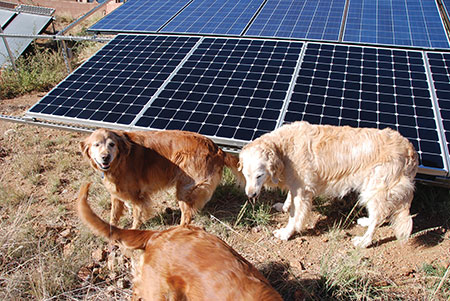
On a dc PV system, we should certainly be well “grounded” between these two articles—I think. See photo 4.
Summary
As can be seen from this continuing examination of the PV requirements in the 2017 NEC, there are many new concepts and requirements to consider. The first PV installers and AHJs to deal with the new Code will have to agree on what the requirements mean and how they will be implemented. Real-world PV applications may reveal situations that are more complex than can be addressed by the code requirements. It is clear that various sections of the Code associated with “grounding” will have to be harmonized with each other and with Article 250.
Please note that this article was written in October 2016 and was based on the Second Draft of the 2017 NEC. The published Code may reflect last minute changes and these, if any, will be addressed in the next “Perspectives on PV” article which will cover additional new requirements that apply to PV systems in more detail.
For More Information
The author has retired from the Southwest Technology Development Institute at New Mexico State University, but is devoting about 25% of his time to PV activities in order to keep involved in writing these “Perspectives on PV’ articles in the IAEI News and to stay active in the NEC and UL Standards development process. Seven to eight hour presentations are still available on PV and the Code and they cover 2008–2014 NEC requirements. He can be reached at: e-mail: jwiles@nmsu.edu, phone: 575-646-6105
The Southwest Technology Development Institute web site maintains a PV Systems Inspector/Installer Checklist and all copies of the previous “Perspectives on PV” articles for easy downloading. A color copy of the latest version (1.93) of the 150-page, Photovoltaic Power Systems and the 2005 National Electrical Code: Suggested Practices, written by the author, may be downloaded from this web site: https://swtdi.nmsu.edu/codes-standards/

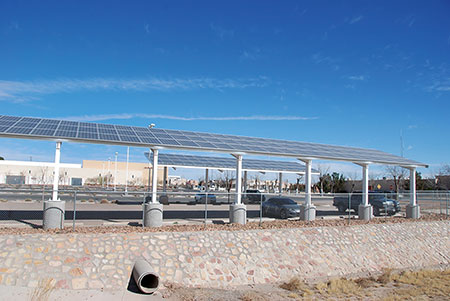









Find Us on Socials